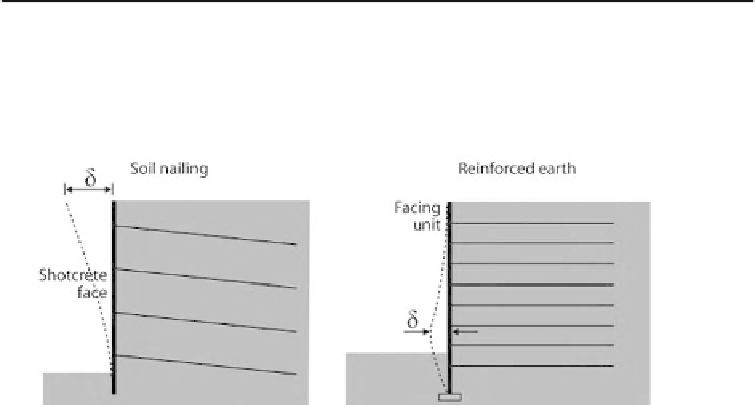Geoscience Reference
In-Depth Information
23.9 Movements at soil nail walls
•
The wall movements are required for the active and passive state to apply. The
type of soil and its wall movement governs the displacement. This was Tabled in
Chapter 19.
•
The displacement of the wall facing depends on the type of soil and the wall
geometry.
•
At the top of a wall, the Horizontal Displacement (
h
)
=
δ
v
(L/H).
δ
Table 23.9
Displacements of soil nail wall (Clouterre, 1991).
Movement
Soil type
Intermediate soils (rock)
Sand
Clay
Vertical displacement (
H/1000
2H/1000
4H/1000
δ
v
)
Distance from wall to
0.8 H (1
tan
0.8H(1
tan
0.8H(1
tan
)
−
η
)
−
η
)
−
η
zero movement
•
High Plasticity clays may produce greater movements.
•
Batter angle of facing
=
η
.
Figure 23.2
Comparison of movement between soil nailing and reinforced soil walls.
23.10 Tolerable strains for reinforced slopes and embankments
•
The reinforcing elements must be stiff enough to mobilise reinforcement forces
without excessive strains.
•
The allowable long term reinforcement tension load
=
T
lim
≤
E
secant
×
ε
tol
.
•
Secant modulus of reinforcement
=
E
secant
.
•
Tolerable strain
=
ε
tol
.
•
Steel reinforcement is inextensible for all practical purposes, and reinforcement
stiffness is not a governing criteria.




Search WWH ::

Custom Search